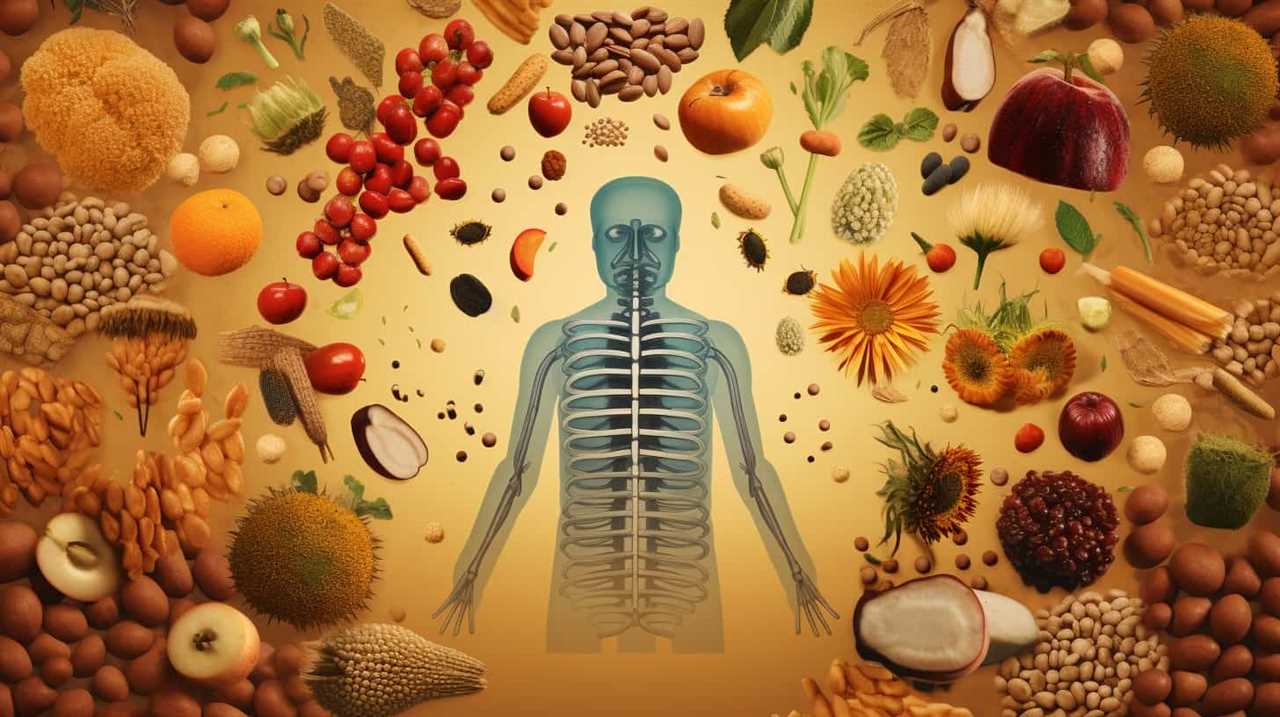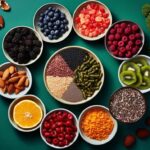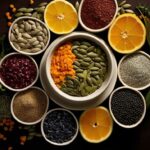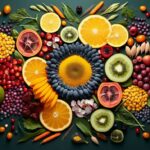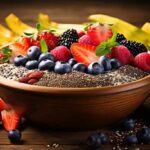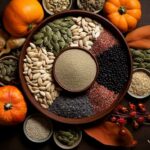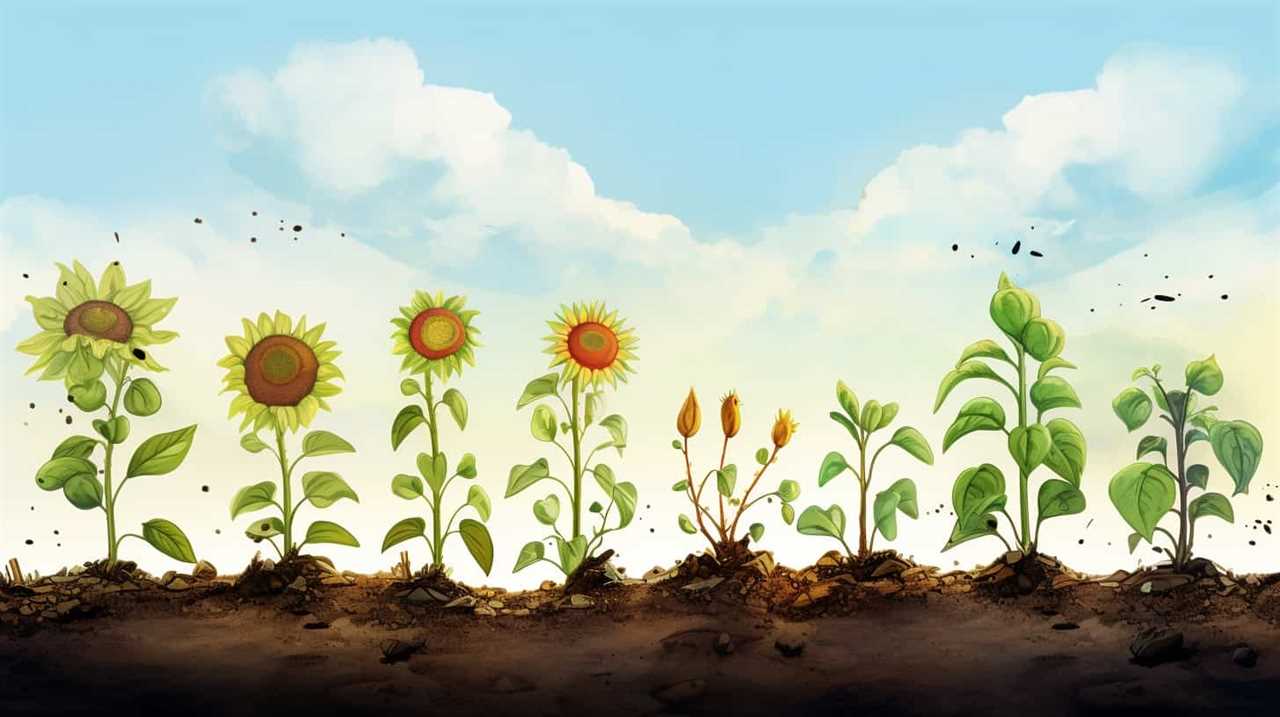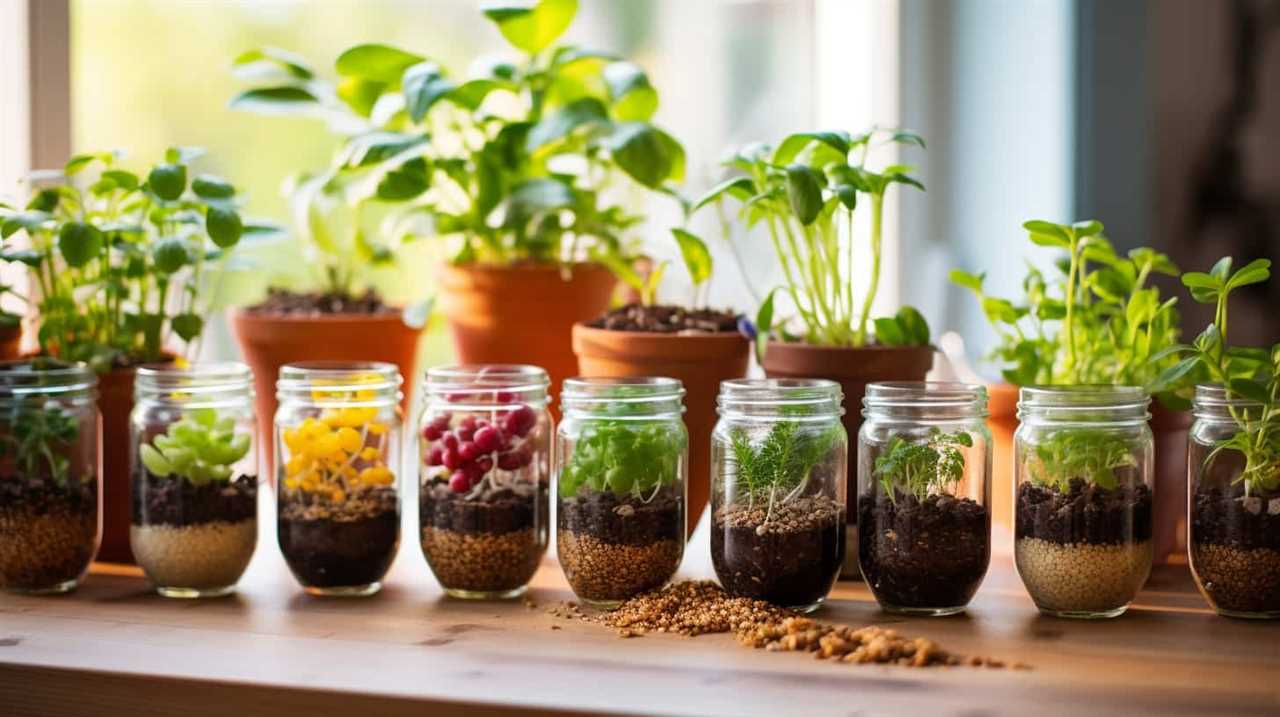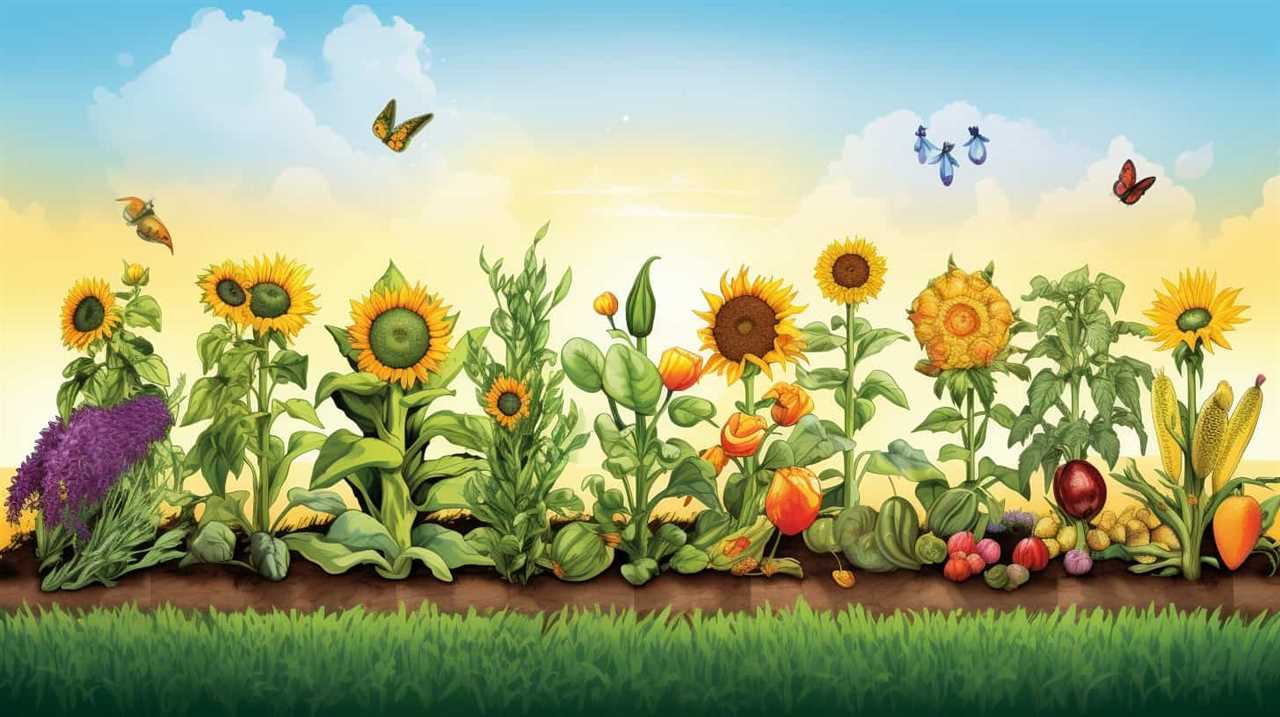We are here to help you with the process of gathering chia seeds.
From planting the seeds in the perfect conditions to nurturing the plants for optimal growth, we’ll show you how to ensure a successful harvest.
With efficient techniques for harvesting the seeds and proper drying and storage methods, you’ll be able to enjoy the benefits of these nutritious little powerhouses.
Let’s dive in and discover the secrets of harvesting chia seeds together.
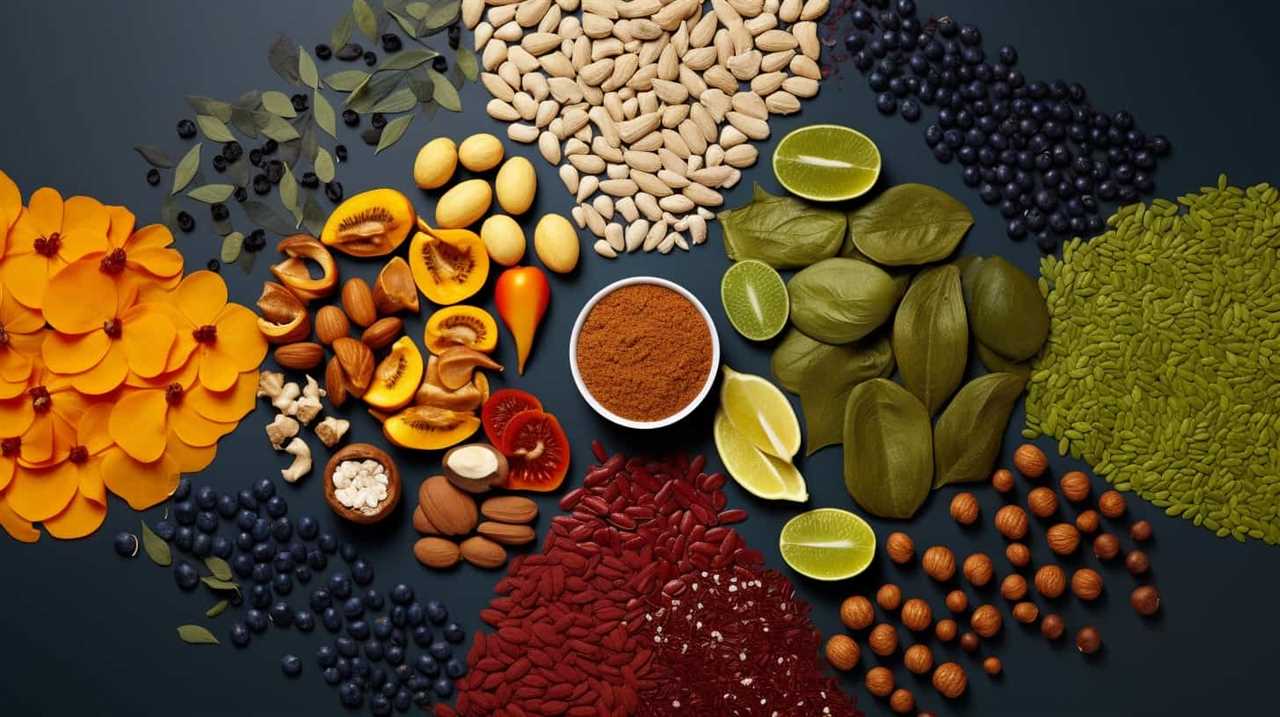
Key Takeaways
- Chia plants reach the flowering stage around 8 to 12 weeks after sowing, and fading flowers indicate seed development and nearing readiness for harvest.
- Dry seed heads turn golden-brown and become brittle when ready for harvest.
- Mechanical harvesting, such as using combine harvesters, and hand picking are both efficient techniques for harvesting chia seeds, depending on the scale and preference.
- After harvesting, chia seeds should be spread in a single layer to dry, stored in a cool, dark place in an airtight container, and kept away from moisture to preserve quality and nutritional value.
Planting Chia Seeds in the Right Conditions
How can we ensure that we’re planting chia seeds in the right conditions?
Germinating chia seeds indoors is a great way to kickstart their growth. To do this, you’ll need a few supplies.
First, find a small container with drainage holes. Fill it with a moistened seed-starting mix, then sprinkle the chia seeds evenly across the surface. Gently press the seeds into the soil, making sure they’re covered but not buried too deeply.
Place the container in a warm area, ideally between 70-75°F. Keep the soil consistently moist, but be careful not to overwater.
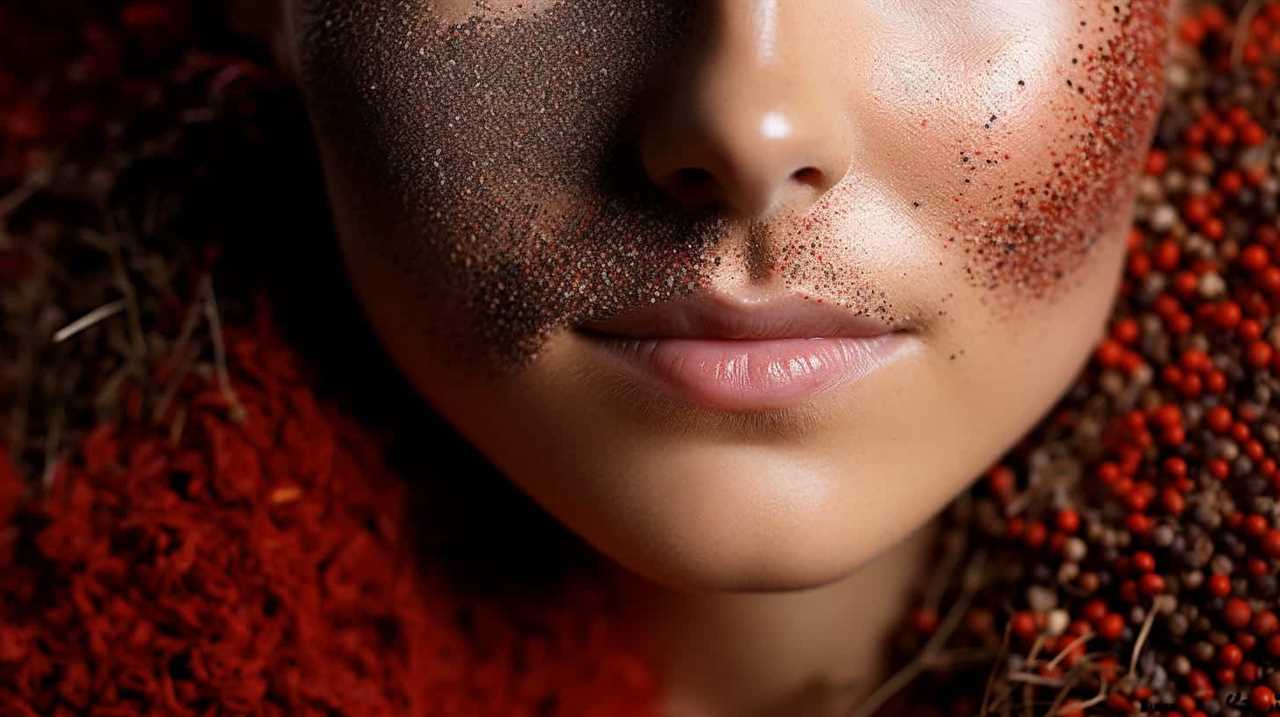
In just a few days, you should start to see tiny sprouts emerging from the soil. Once they reach a height of 2-3 inches, you can transplant them to larger pots or directly into your garden.
With their high nutritional value and numerous health benefits, growing chia seeds is a rewarding experience that promotes a healthy lifestyle.
Nurturing Chia Plants for Optimal Growth
To continue nurturing chia plants for optimal growth, let’s explore the best practices for maintaining their health and maximizing their yield.
Pruning chia plants is an essential step in promoting healthy growth. Regularly trim any dead or diseased leaves to prevent the spread of diseases and ensure that the plants are receiving adequate sunlight and air circulation. Additionally, removing excess foliage allows the chia plants to direct their energy towards producing seeds.
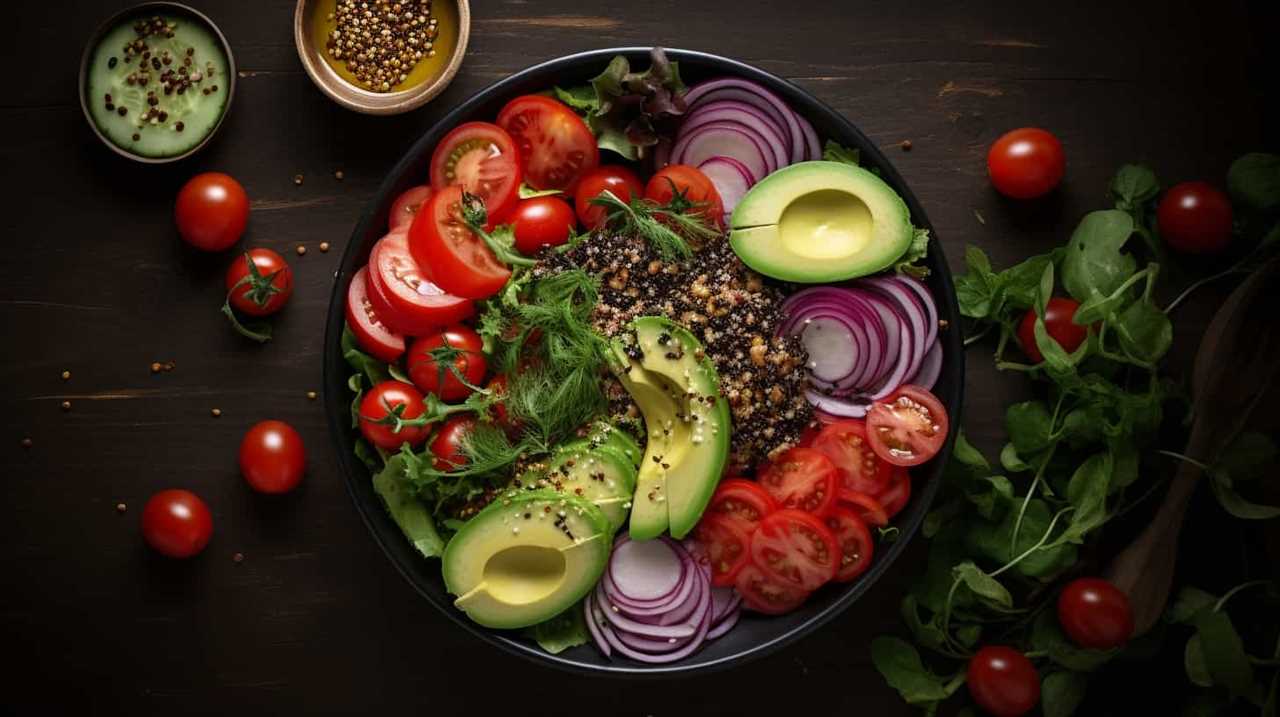
Preventing chia plant diseases is crucial for a successful harvest. Ensure that the plants have proper drainage and avoid overwatering, as excessive moisture can lead to root rot and other fungal infections. Regularly inspect the plants for signs of pests and treat them promptly to prevent infestations.
By following these practices, you can maintain the health of your chia plants and prepare them for a bountiful harvest.
As the plants continue to thrive, it’s important to determine the right time for harvesting chia seeds.
Determining the Right Time for Harvesting Chia Seeds
To determine the optimal time for harvesting chia seeds, we must carefully observe the plants’ maturation process. Here are some key signs to look for to determine the ideal maturity of chia plants:
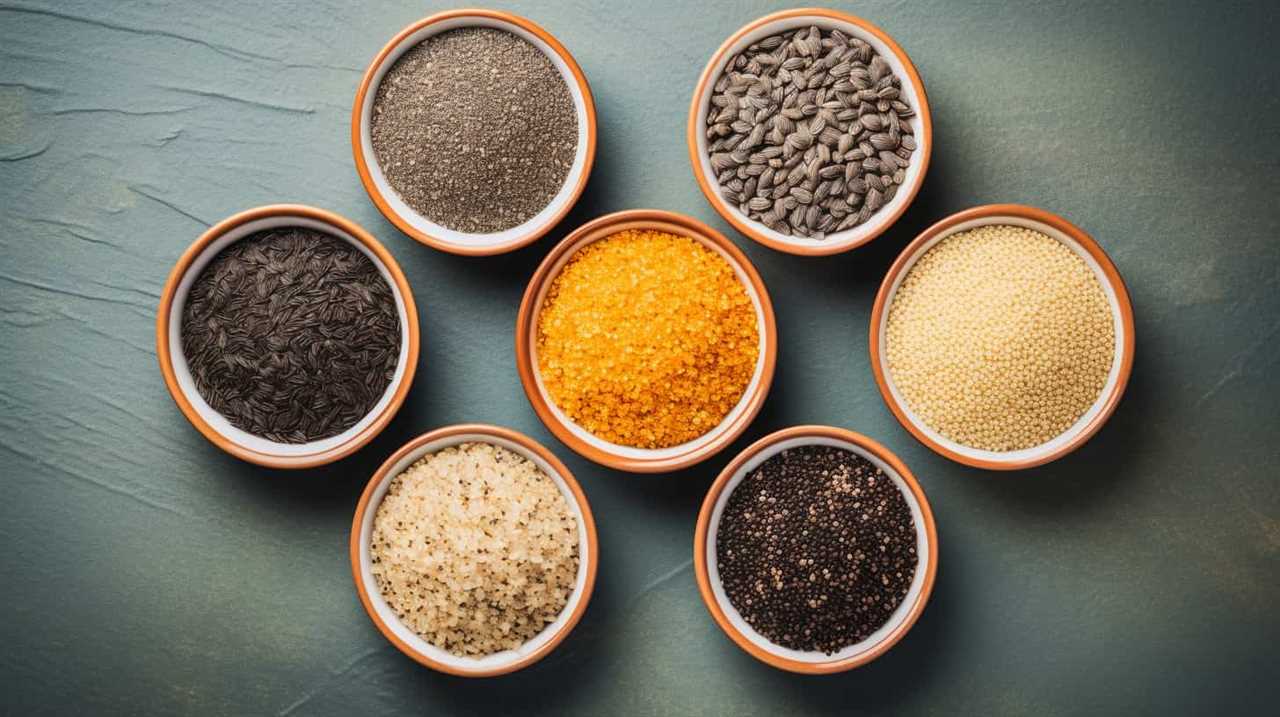
-
Flowering stage: Chia plants typically reach their flowering stage around 8 to 12 weeks after sowing. The flowers are small and white, and they usually appear at the top of the plant.
-
Fading flowers: As the chia flowers mature, they’ll start to fade and turn brown. This is a clear indication that the seeds are developing and nearing readiness for harvest.
-
Dry seed heads: Once the flowers have completely faded, the seed heads will start to dry out. They’ll turn a golden-brown color and become brittle to the touch. This is the perfect time to harvest the chia seeds.
Techniques for Harvesting Chia Seeds Efficiently
To efficiently harvest chia seeds, we rely on the use of specialized tools and techniques.
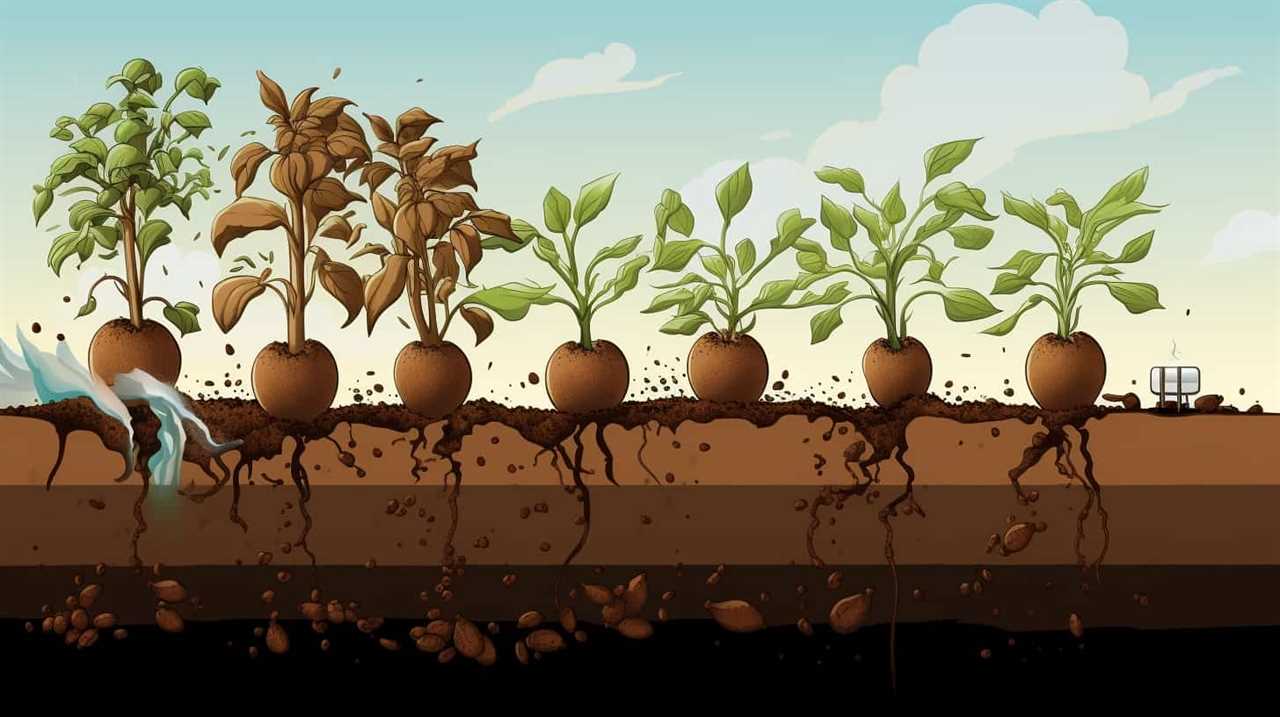
One common technique is mechanical harvesting, which involves the use of machinery to remove the chia seed heads from the plants. This method is efficient and time-saving, especially for large-scale chia farms. Mechanical harvesting involves the use of equipment such as combine harvesters, which are specifically designed to separate the seeds from the chia plants.
On the other hand, hand picking is another technique used for harvesting chia seeds. This method is more labor-intensive and time-consuming but allows for a more selective harvest. Hand picking involves manually removing the chia seed heads from the plants, ensuring that only fully mature seeds are collected.
Both mechanical harvesting and hand picking play crucial roles in efficiently harvesting chia seeds, depending on the scale and preference of the chia farmer.
Drying and Storing Harvested Chia Seeds
After harvesting chia seeds, our next step is to efficiently dry and store them. Properly drying the seeds ensures their longevity and preserves their nutritional value.

Here are some drying techniques and tips for proper storage:
- Spread the harvested chia seeds in a single layer on a clean, dry surface, such as a baking sheet or a tray.
- Place the seeds in a well-ventilated area away from direct sunlight. A warm, dry room is ideal for drying.
- Stir the seeds occasionally to ensure even drying and prevent clumping.
Once the seeds are completely dry, transfer them to an airtight container or a glass jar with a tight-fitting lid. Store the container in a cool, dark place, such as a pantry or a cupboard.
Avoid exposing the seeds to moisture, heat, or sunlight, as these can degrade their quality. Check the seeds periodically for any signs of moisture or mold, and discard any spoiled seeds.
Frequently Asked Questions
Can Chia Seeds Be Harvested From Any Type of Chia Plant?
Chia seeds can be harvested from various types of chia plants. We’ll explore growing conditions and nutritional benefits later. It’s important to know which type of chia plant you have before discussing the process for harvesting the seeds.
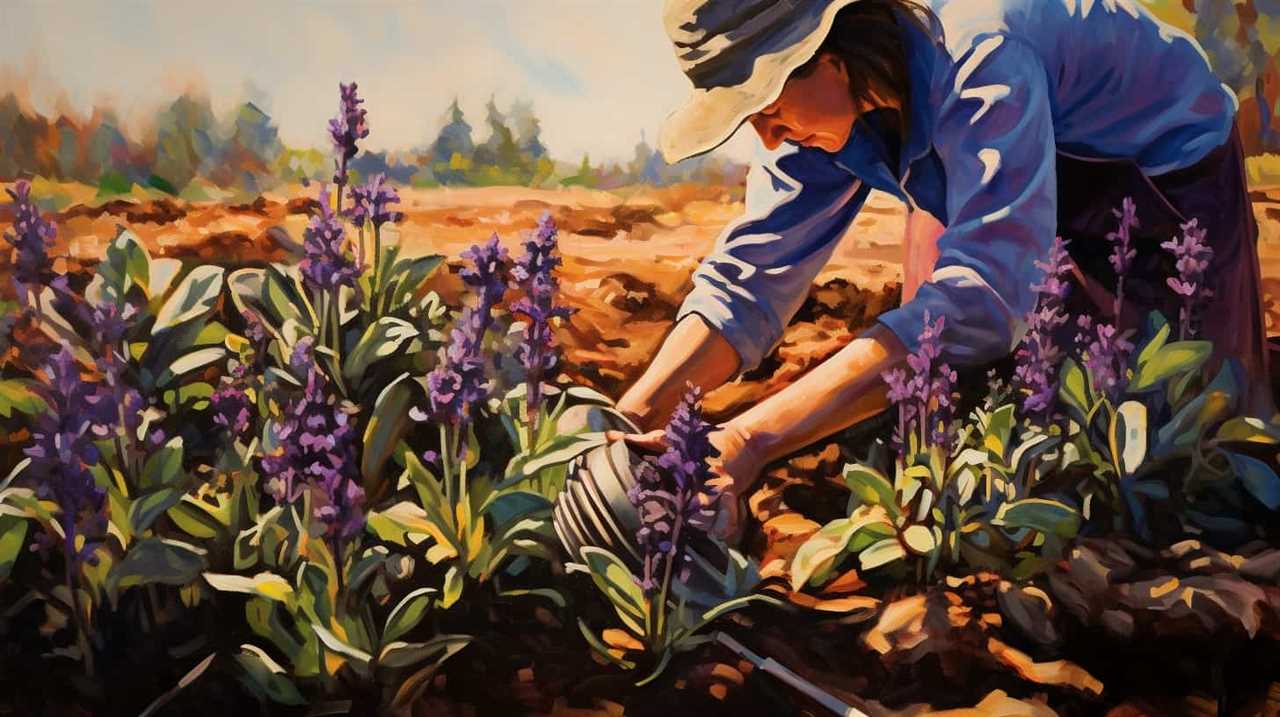
How Long Does It Take for Chia Plants to Mature Before Harvesting the Seeds?
When chia plants reach maturity, we can harvest their seeds. The timeframe for this varies depending on the specific plant variety, but generally takes about 90-120 days. To harvest chia seeds, we use techniques such as threshing and winnowing.
Is It Necessary to Remove the Entire Chia Plant During the Harvesting Process?
Removing the entire chia plant during harvesting is not necessary. There are alternative methods that allow for seed extraction without uprooting the entire plant. These methods are less disruptive and can promote plant regrowth.
Can Chia Seeds Be Harvested Manually or Is It Recommended to Use Machinery?
Using machinery for harvesting chia seeds has its advantages, such as efficiency and speed. However, manual harvesting allows for greater precision and careful selection. Both methods have their pros and cons.
What Is the Best Way to Store Harvested Chia Seeds to Ensure Their Freshness and Longevity?
To ensure freshness and longevity, we recommend using proper storing techniques for harvested chia seeds. Preserving quality is key, and our expertise in this area allows us to provide detailed and informative guidance.
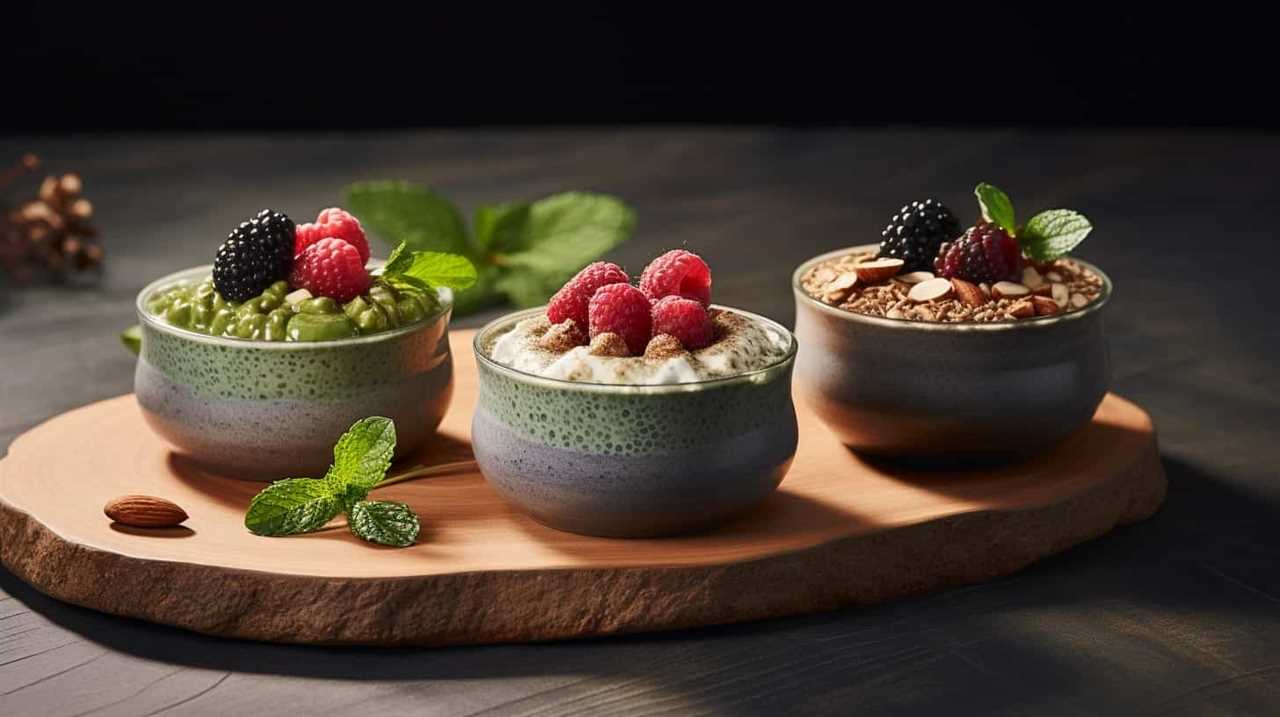
Conclusion
After carefully nurturing and tending to our chia plants, the time has finally come for the moment we’ve been eagerly waiting for – the harvest.
With anticipation hanging in the air, we carefully collect the ripe chia seeds, their tiny, teardrop shapes shimmering in the sunlight.
As we gather our bountiful harvest, we can’t help but imagine the endless possibilities and nutritious benefits these precious seeds hold.
With each step of the process completed, we’re one step closer to enjoying the fruits of our labor.
